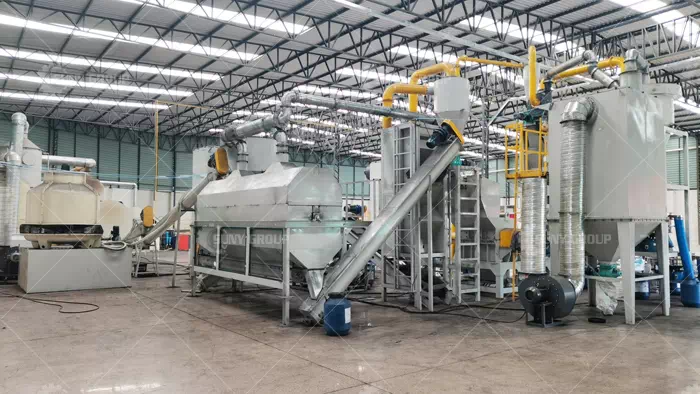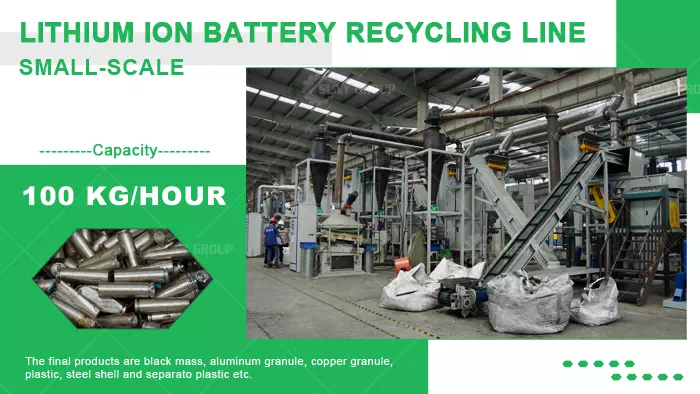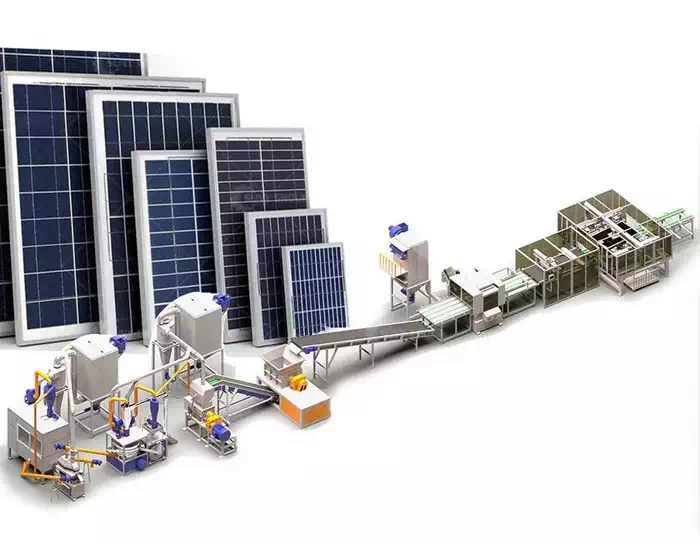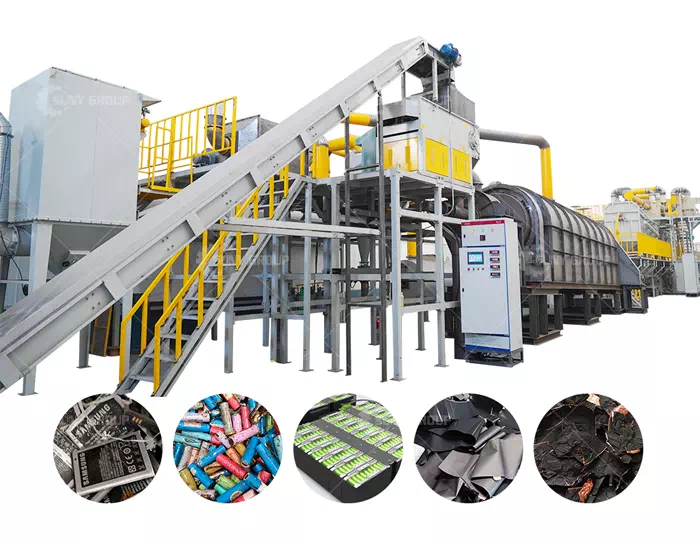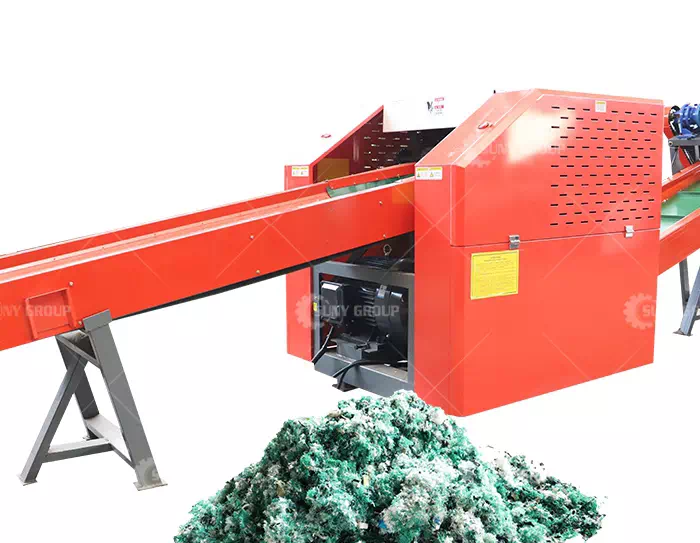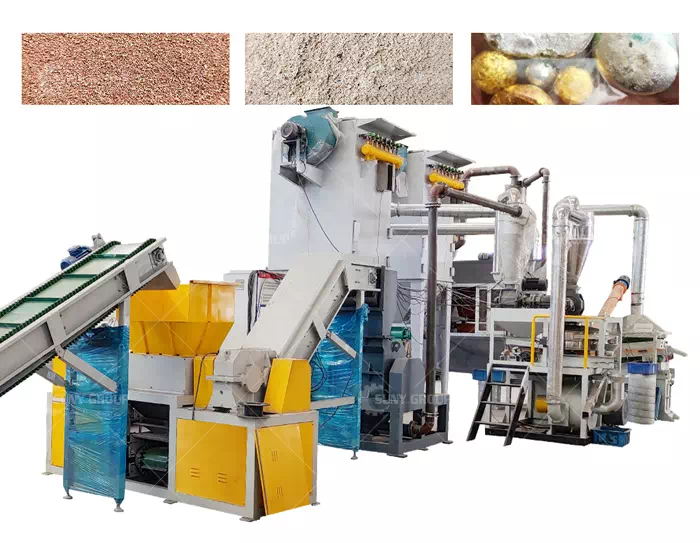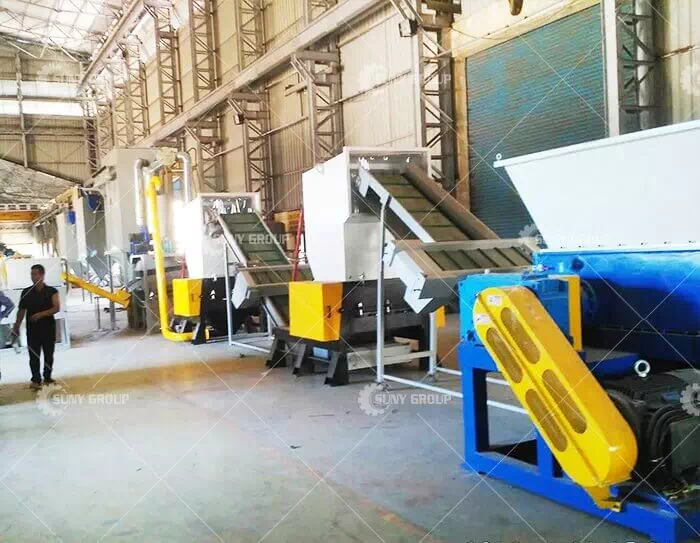Lithium-ion Battery Recycling Process Equipment
With the rapid development of electric vehicles and renewable energy, the use of lithium batteries has shown explosive growth. However, a large number of end-of-life lithium batteries, if not properly disposed of, will not only have a serious impact on the environment but also waste valuable resources that can be recycled and reused.
Lithium battery recycling refers to the process of extracting valuable metals, such as lithium, cobalt, nickel, and other useful materials from used lithium batteries. The main technical methods of lithium battery recycling include pyrotechnic recycling and physical-mechanical recycling.
Pyro-recovery utilizes high temperatures to decompose used lithium batteries into metal oxides, metals, and gases. The advantages of thermal recycling are a simple process and a high recovery rate, and the common equipment is a continuous carbonization furnace.
During the operation of the continuous carbonization furnace for lithium batteries, it is first necessary to mechanically and physically crush the used lithium batteries to break them into small pieces. Then, these pieces are put into the carbonization furnace for carbonization. During the carbonization process, the organic matter and moisture in the material will be pyrolyzed and decomposed, leaving a mixture of metal matter and black powder such as graphite powder, carbon powder, and lithium powder.
Subsequently, processes such as specific gravity sorting and electrostatic sorting are used to separate the different compositions in these mixtures, thus realizing the recycling of resources. The advantage of the continuous carbonization furnace for lithium batteries lies in its high degree of sorting, with a separation effect of more than 98%. In addition, it is easy to operate and has low maintenance costs. The whole set of lithium battery crushing and carbonization equipment also has a high degree of automation, which can save a lot of labor and material costs.
In addition, when it comes to recycling end-of-life lithium batteries, physical-mechanical crushing and sorting is a common treatment method. I will describe this process in detail below.
Dismantling: First of all, waste lithium batteries need to be dismantled. Lithium batteries are composed of a shell, positive electrode (aluminum substrate), negative electrode (graphite and copper substrate), electrolyte, and diaphragm. After disassembly, these components can be further processed.
Crushing: Next, the scrap lithium battery fragments will be sent to the crusher for crushing to make them into smaller particles.
Sorting: After crushing, the material goes through multiple stages of screening and sorting. This process helps to separate different components, such as copper and aluminum particles, diaphragms, and battery material pole powder. With the fine crusher, the black powder on the pole powder can also be stripped off, making the copper and aluminum foils granular.
Lithium battery recycling is a complex systematic project that requires comprehensive consideration of technical, economic, and environmental factors. With the advancement of technology and cost reduction, lithium battery recycling will surely be more widely used. SUNY GROUP, as a professional manufacturer of solid waste recycling equipment, has rich experience and equipment in lithium battery recycling. If you need further information, please feel free to contact us.
Recommend products
CONTACT US:
If you have any requirement or suggestion, please fill in the form and send to us, thanks!E-mail:sunymachine@gmail.com | Whatsapp:+8613674945231


